My Favorite Cold-Hardy Vegetables
This beautiful bed is a colorful mix of cold-hardy vegetables. Kale, leek and my favorite leafy greens! Learn more about fall and winter gardening here.
I decided to grow plenty of extra kale plants this year. Partially because I wanted a surplus in case slugs or larvae started to get to them, but also because I wanted to use cold-hardy vegetables for a fall project in my greenhouse. Until now, the plants have been growing in my beds outside with minimal effort from my end. I haven't really been watering or fertilizing them, so they aren't exactly the stars of my garden. But they will get more attention from now on!
More about cold-hardy vegetables: Harvesting miner's lettuce
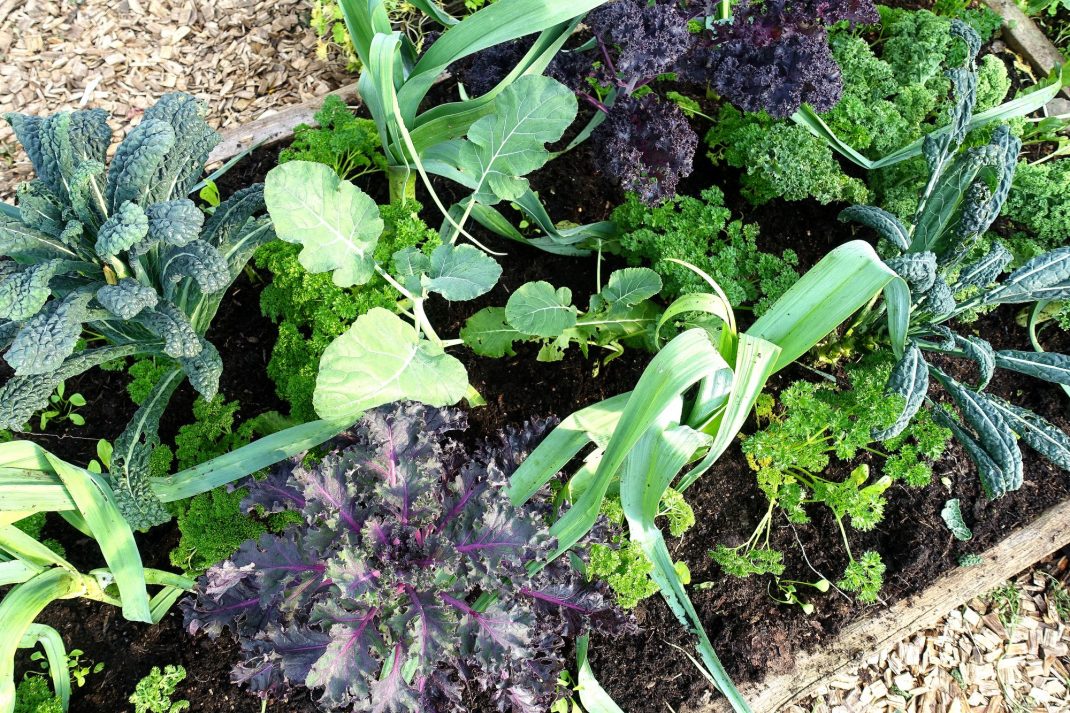
There's no real order in my bed filled with cold-hardy vegetables.
Cold-Hardy Vegetable Bed
So now, I basically just transplanted different kinds of kale, leek and parsley from the beds outside to the middle bed in my polytunnel. I've made hotbeds in this spot for two years and the almost 10 ft (3 meter) long bed is filled with nutrient-rich humus.
I have to admit that I'm not sure about which cabbage varieties I chose this time. My labels seem to disappear all the time. But the beautiful one with purple nerves is called Midnight Sun and the smallest kale variety is called Dwarf Green Curled. The latter is actually a great choice if you want to overwinter your kale. Since it's so low-growing, it's easy to protect it against hungry animals and it's not as vulnerable to botrytis either. I also have two types of black and purple kale, and the variety Emerald Ice that produces white/green leaves. All of them great choices for a cold-hardy vegetable bed.
More: How to freeze kale
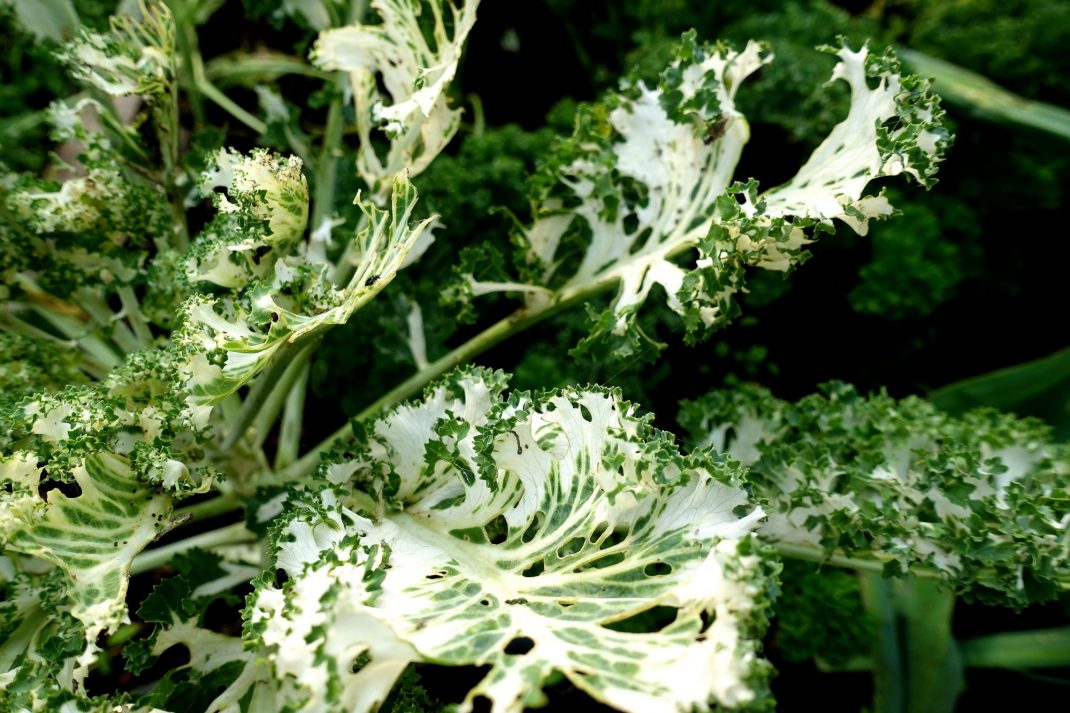
The cabbage variety Emerald Ice has white leaves. Mine have been affected by pests, but I hope that they will get better soon!
I also decided to add some Miner's lettuce and a late summer sowing of the lettuce variety Little Gem to my bed. The plants were so tiny when I put them in the bed. But they grow quickly in nutrient-rich soil. Sadly, I was all out of lamb's lettuce and tatsoi seeds. I hope to get some new ones in the coming days though! I'm just going to scatter these seeds among the plants and hopefully, I'll get to harvest in winter or early spring. Lamb's lettuce and tatsoi cabbage are some of the most cold-hardy vegetables I know of.
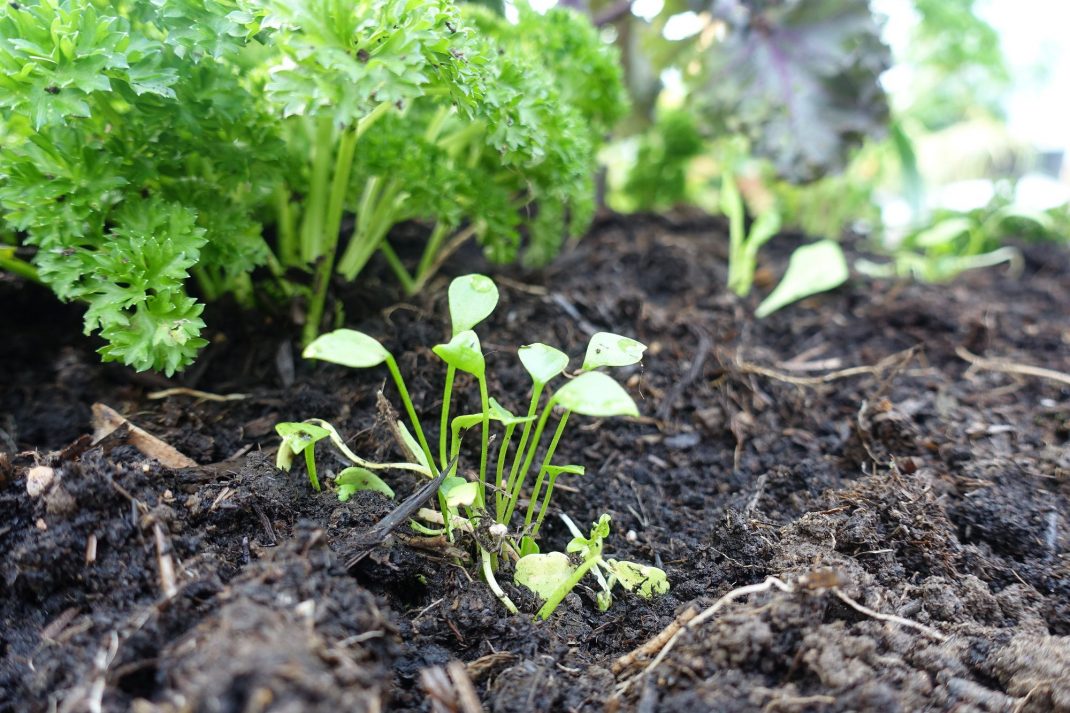
Miner's lettuce looks very vulnerable in the beginning, but it grows quickly in fall. This is one of the most cold-hardy vegetables that you can harvest in fall, winter and spring.
Watering Cold-Hardy Vegetables
One thing I try to think a bit more about during fall is watering. It can get very damp in the polytunnel, so much that the risk of botrytis increases. Especially if I use a regular hose. The plants just get too wet when I use a hose. So instead, I use a regular watering can right on the soil. It's not as convenient of course, but then we don't need as much water at this time of the year. The temperature is dropping outside which means that I don't need to use as much water in the tunnel.
Also, you need to get an airflow in the polytunnel. I try keep one of the doors slightly open in fall. In general, I think that the chill is better than too much moist for these cold-hardy vegetables. Unless we have strong winds of course.
More about watering: Using a soaker hose
Sheltered Spot
I'm going to leave this bed as it is until the other leafy greens start to look a bit worse for wear. Or at least, as long as we can leave them alone. It's a lot easier to bring an angry toddler to the polytunnel rather than walking all the way out into the garden of course. The idea is that the vegetables in the polytunnel will last a bit longer than the ones outside. And most importantly, that they're easy to take care of when the snow comes. This is not a heated polytunnel but the sheltered spot is still a better environment for my cold-hardy vegetables than the beds outside.
More about fall and winter gardening: Growing vegetables in winter – A beginner's guide
/Sara Bäckmo
16. November 2020
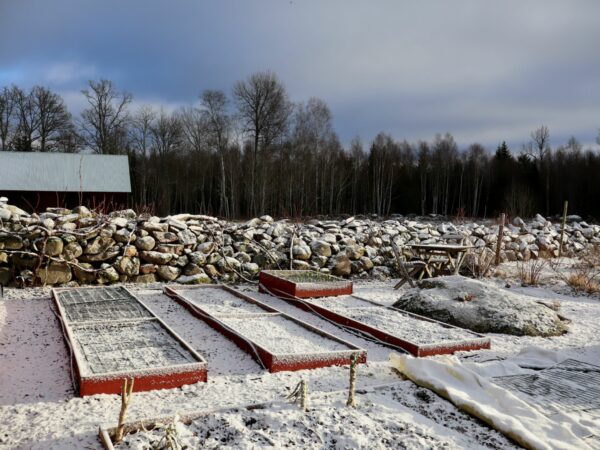
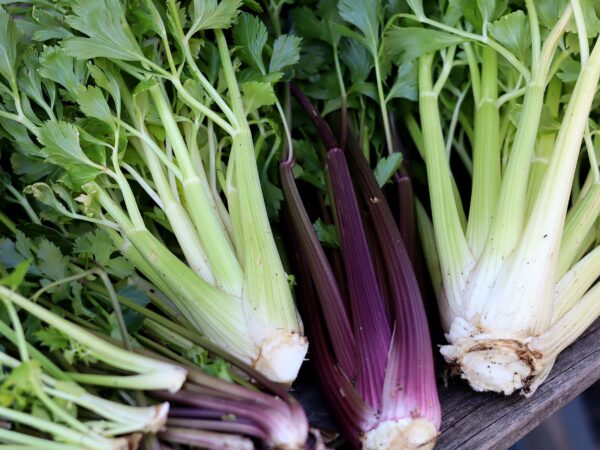
Leave a Reply
You must be logged in to post a comment.